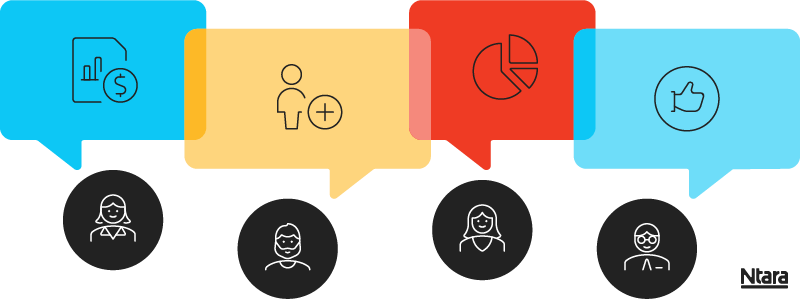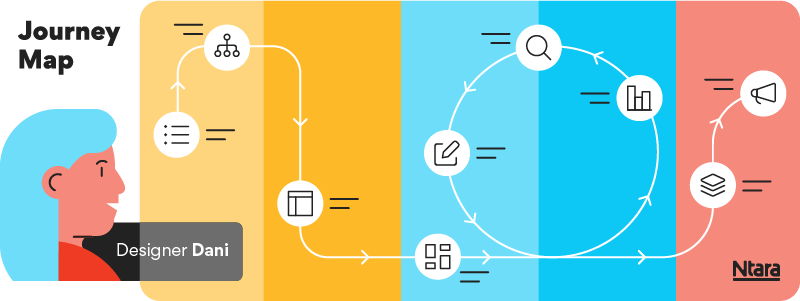“We need to increase sales.”
“We need new customers.”
“We need a larger share of the market.”
“We need to build customer retention and satisfaction.”
Sound familiar? Chances are, as a leader in a commerce-based organization, you’ve had some of these discussions.

Websites often act as an extension of your customer service and marketing departments. But entering the ecommerce arena also makes your website an extension of your sales team—and a revenue generator. In planning for an ecommerce website, there are several key factors to consider. These elements will enhance the experience for your users and provide avenues for you to learn more about your customers.
Do you need an ecommerce login system for transacting?
Often, B2B sites require a login to transact. There are many reasons for this but, in our experience, two rise to the top.

First, logins allow you to control who accesses what information on your site. Many companies don’t want their competitors perusing their sites, and a login is a great way to prevent that.
Second, logins allow you to control who sees what pricing. Some companies allow public users to view the site and products but hide pricing until the user is logged in. Other companies choose not to allow the site to be viewed at all until a user is logged.
How will your ecommerce customers purchase?
Will one person in the company manage all purchasing? Do accounts need to be set up by individuals or at the business level with multiple purchasing agents?

Each business has varying processes for the purchase of products and services. Depending on that process and the layers of your company, you may require a tiered purchasing system.
Multiple users could purchase for your company, and you may need approvers to complete certain types of transactions. Knowing your customers’ policies and purchasing processes is essential for developing a website where they can transact.
How clean is your content and data integrity?
Ecommerce websites are made up of content and product information. But how smoothly and easily this transfer of information happens depends on your systems, data availability, and data accuracy.
Is your product data housed in one system? How will that system “talk” to the ecommerce platform? This is often an opportunity for companies to evolve.
If your data is complete, in one system, and ready for uploading, congratulations! You are one of the lucky few.

Never fear for the rest of us, though, as we have content systems and partners to provide the product information management (PIM) support you need. During this data cleansing and enrichment process, it is also a good time to address your staff’s bandwidth and how data will be cleaned, updated, and maintained.
How will your ecommerce transactions be completed?
For B2B purchasing, there are often various options to consider. Will customers complete the transaction with a credit card? For larger purchases, customers may need the option of net terms and PO purchase power. If your company does business internationally, you may also need the ability to convert pricing before checkout.

When the transaction is completed on your ecommerce website, how will it process through your internal systems for order completion and shipping?
How will your products ship (e.g., UPS, FedEx)? And how will your system determine shipping charges? These are all considerations that need to be determined ahead of time.
B2B ecommerce: design vs. functionality
It is critical to align with your business on the needs and priorities around design and functionality. B2B users typically expect an easy, efficient purchasing experience—but that doesn’t have to come at the cost of great design. You must understand who will be using your ecommerce website, their expectations, and how best to deliver the functionality they need.
For example, if a customer is purchasing a new fleet of forklifts, they know they need machinery, but they may also want to compare brands. At this point, the product description, the images, and the design are critically important, and there might be an opportunity to upsell.
However, if someone needs 30 screws for a driveline component, they may care more about how quickly it is to find that specific product, get it into the cart, and check out. The role of design becomes more functional—getting them to the right product efficiently, with fast page load times.
Design versus function is a conversation that needs to happen internally within your business. You can choose both design and function, but you need to know what’s important before you begin your website design.
Help your ecommerce customers find what they need in a way that is intuitive for them, get them to checkout, and make it easy to purchase from you. We recommend conducting customer research and developing data-driven personas and customer journey maps to identify your customers’ actual needs. This helps ensure that you will meet their needs with your website.

Ecommerce website optimization
If you want to understand how customers navigate your website, you need to have the ability to observe their behavior and identify any hurdles. There are many tactics to implement, such as recorded session replays and heatmaps.
Watching users navigate your site will show you what works well and identify any trouble spots. This can help lower your bounce rate and improve conversion. These insights are also beneficial for training and educating employees and management about your ecommerce website process and needs.
Optimal site search
To provide the best search experience for your users, it is important to understand how they interact with your products, SKUs, item numbers, descriptions, etc.
Will customers expect to type in a part number and the item appear? Will they want to type the product name and description? Will they want to order through categories?
Customers sometimes browse differently than they order. It’s critical to understand those nuances and adjust your site search functionality to accommodate actual customer needs.
Often, businesses must take their best guesses when planning this taxonomy. In those cases, it is important to observe the effectiveness of your chosen structure and ensure it’s working.
Bringing it all together into an ecommerce plan
Your ecommerce website should be tailored to meet your business needs and your audience. Mapping each item outlined in this article upfront will optimize the resources you invest in your new ecommerce website.
Identifying the components of your ecommerce website ahead of time will help your agency partner more accurately estimate the level of effort to create your site. It will also reduce the number of hours spent in design and development.